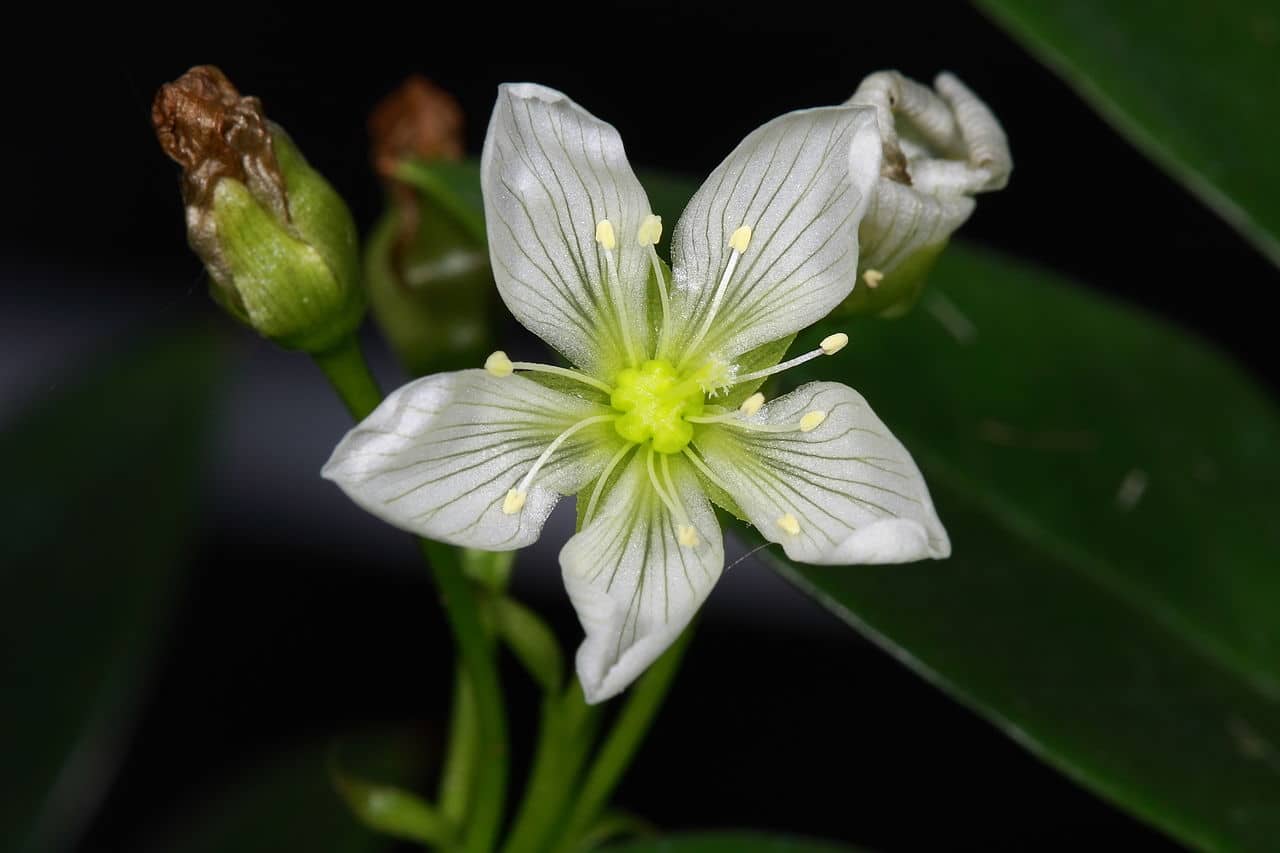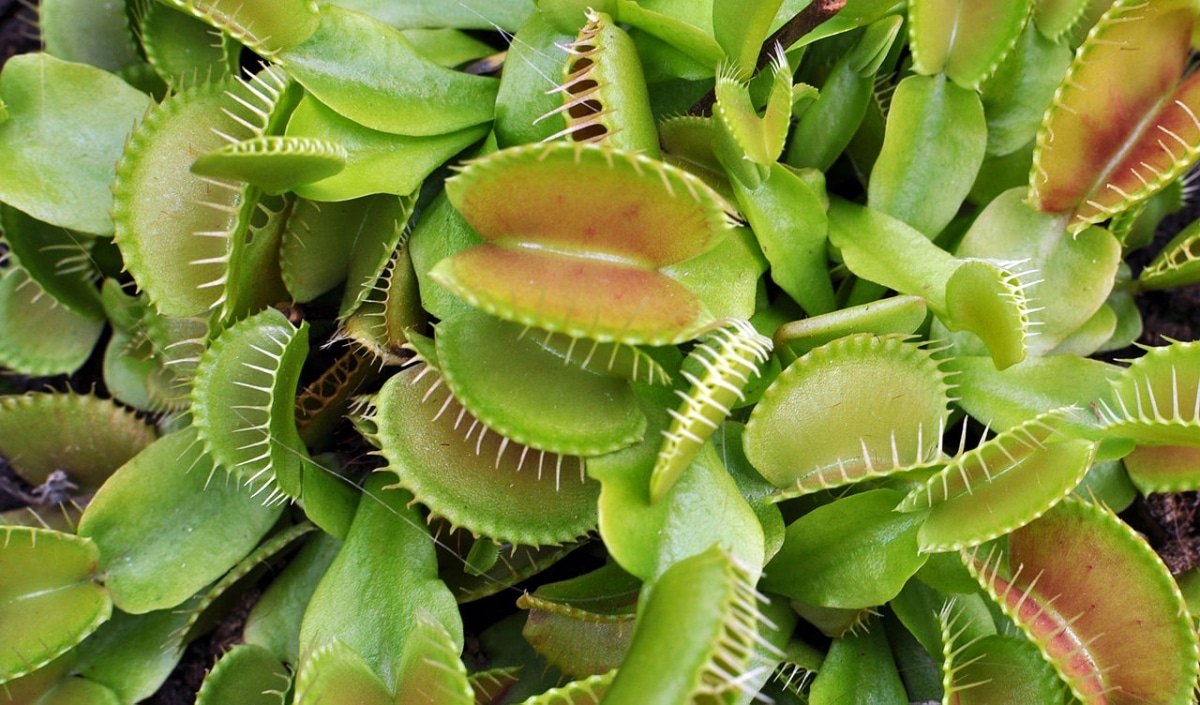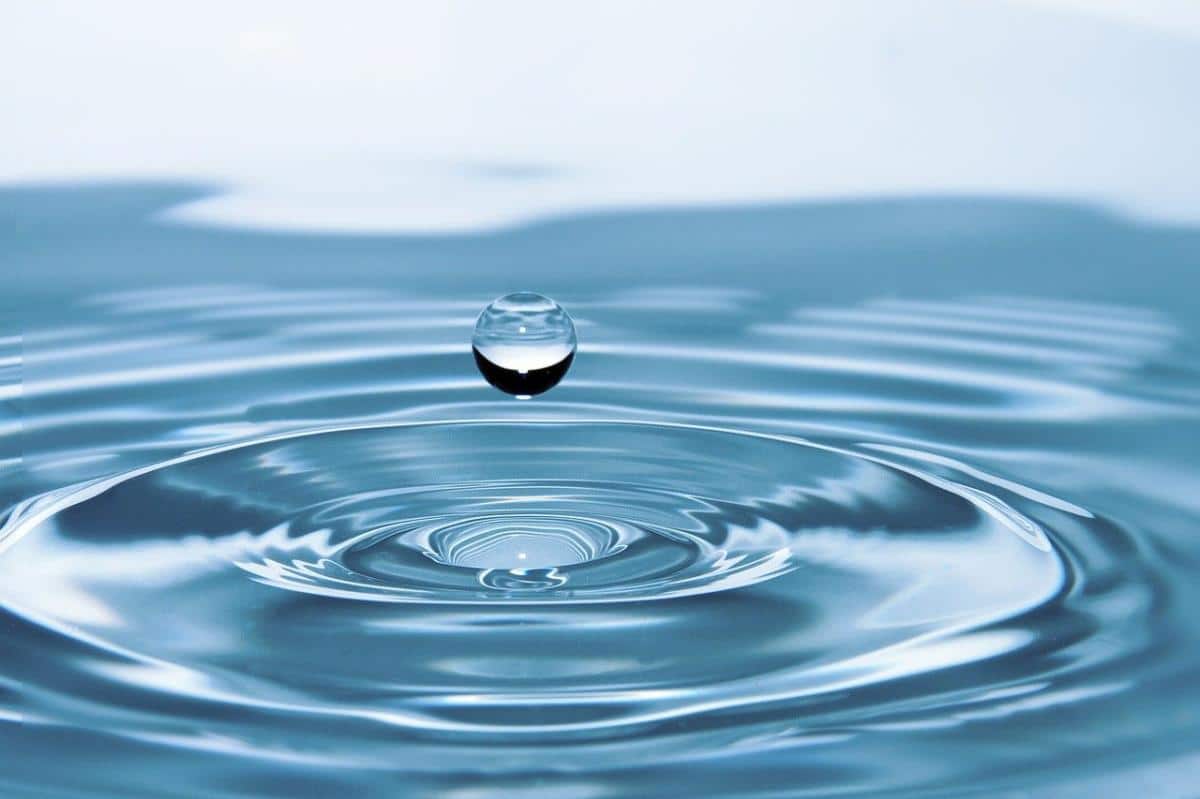
Image – Wikimedia/Calyponte
The Venus flytrap is by far the most popular carnivorous plant of all. Its leaves, which have become traps, are so well adapted to their environment that if the insect inadvertently stimulates them by touching one of the three 'hairs' on their upper surface, they will quickly close.
But also, you have to know that its flower is quite beautiful. It doesn't last long, yes, but it is worth doing everything so that the plant has strength and flourishes.
What are the characteristics of the flower of the venus flytrap?

Image - Wkimedia / Citron
La venus flytrap It is a plant that, in order to survive, has evolved until it has managed to transform its leaves into very sophisticated traps. But of course, it not only needs to be fed, but also to produce seeds; that is, do everything possible to pass on their genes, like many other plants.
For this reason, when it blooms, it always does so in spring, which is when the temperatures are pleasant, so much so that pollinating insects, such as bees, resume their usual rhythm of activity. But to keep them safe, what it does is produce a fairly long stem, about three inches, at the end of which the flower sprouts.
This It is small, since it measures a centimeter in diameter more or less. It is also white, and is composed of five petals. This one lacks aroma, but that does not prevent pollinators from visiting it to feed.
What to do to make it bloom?
It is a plant that is not always easy to care for, since depending on the conditions in the area it can be, in fact, very demanding. To this we must add that you cannot put any type of substrate, or water it with any water, since if we did, it would probably not last long. For this reason, we want to tell you how to take care of it so that it can produce its beautiful flowers every spring:
Plant it in a pot with a suitable substrate
This is the basics. The pot has to be made of plastic, and you have to fill it with a mixture of blonde peat mixed with perlite in equal parts.. Why? Well, because if the container were made of any other material, little by little it would degrade and the roots would have many problems, since they are not prepared to absorb nutrients directly.
And as for the substrate, it is for the same reason. Pure, uncomposted blonde peat is not only lacking in nutrients but also has a low, acidic pH, which is just what the carnivore needs.. And perlite is added simply to improve water drainage, since if there is something that its root system does not tolerate, it is waterlogging.
You can buy the blonde peat by clicking here, and the perlite clicking on this link.
Do not keep the plate always full
Some people usually put a plate under the pot, and fill it with water every time it is seen without. Well, this is a problem, especially in winter, which is when the substrate takes much longer to dry. That is why, Yes, you can put a plate on it, but always remember to empty it.
For this reason You don't have to plant either Dionaea muscipula in a pot without holes. No matter how beautiful a pot is, if it is not going to be useful, if, on the contrary, it can end the life of the carnivore due to excess water in its roots, it is best not to plant anything in it.
Water it with distilled or rain water

If you want, you could also use the air conditioning. But in no case should you water it with calcareous water, or with one that has a lot of dry residue. The best water for your carnivore is one that is pure, the more the better.
Regarding the frequency of irrigation, you have to water the venus flytrap about three times a week during the summer or so, but they should be more if you see that the substrate dries very quickly. As temperatures drop, and/or if it rains regularly, watering will be more spaced.
Place your carnivore in an area with plenty of light
The Venus flytrap needs to be in a place where there is a lot of light. Thus, it should be placed either outside in semi-shade, or inside a room with windows. In addition, if it is going to be kept indoors, it is important that you spray it daily with distilled water if the air humidity is very low; that is to say, you do not have to do it if it is on the contrary high, since it would rot.
If you have doubts about the degree of humidity in the place where you want to place it, I recommend getting a weather station for home use. Another option is, if you plan to leave it outside, check if the outdoor plants wake up wet every morning; if so, nothing more would need to be done.
don't pay it
If it were -almost- any other plant, I would tell you that for it to flourish you need to fertilize it, but the Venus flytrap does not have to be fertilized, ever. As he commented before, the roots cannot absorb the nutrients directly, so if it were fertilized, the plant would die.
Protect it from strong frost

Image - Flickr / rpphotos
The Venus flytrap is a carnivore that can withstand the cold without difficulty, as well as sub-zero temperatures. However, care must be taken with strong frosts, since if the thermometer drops below -4ºC it will not exceed it. That is why if we are interested in it flourishing, it will be very important to make sure that it is placed in a good place.
I hope that you can enjoy the flower of the venus flytrap.